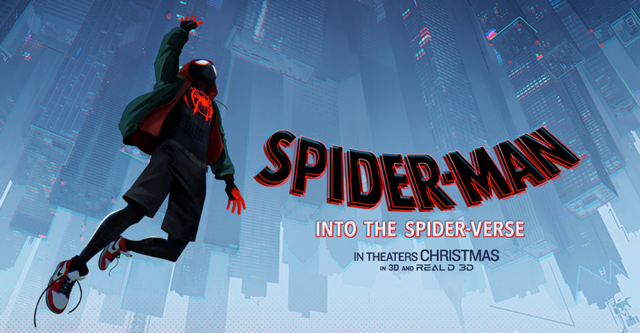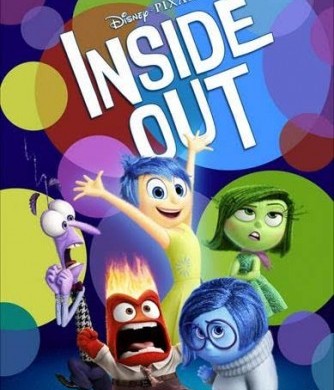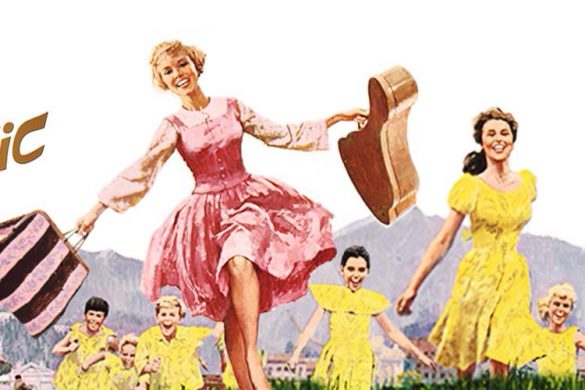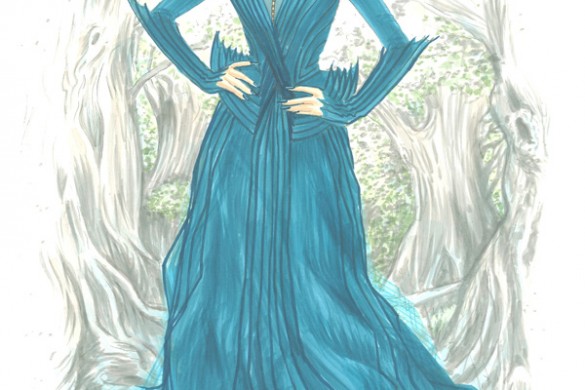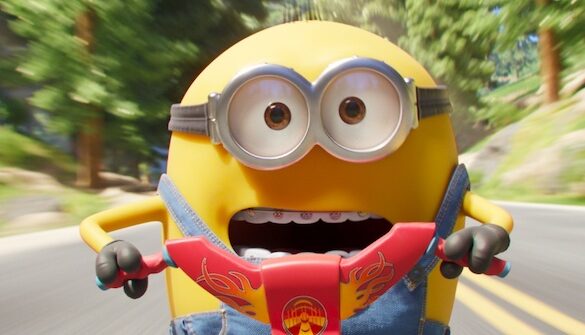There is something to be said about Spider-Man: Into The Spider-Verse. But to describe it with words like amazing, astonishing, sensational, or spectacular really wouldn’t do the film any justice. This is the definitive comic book movie. One that leaps off the pages of a comic book and comes to life on the big screen to tell a different and very refreshing version of the webslinger. One that not only reflects the time that we live in today but also is able to deliver a very timely and relevant message about what it takes to be a true hero.
Unlike any of the previous Spider-Man films that came before it, Into The Spider-Verse centers on Miles Morales (Shameik Moore), a teenage Afro-Latino who has just been accepted into a prestigious prep school for the academically gifted. However, Miles struggles to fit in the school full of elitist kids. So he tries his best to fail at his tests in hopes he flunks out of school so that he can return to his old school not realizing that his teachers know that he is doing it on purpose. So, when he is given an assignment that will help him figure out who he is, he goes to his uncle Aaron Davis (Mahershala Ali) who help guide him. Aaron knows Miles has potential and helps his nephew embrace it with a secret trip to an underground tunnel where he can create his art.
But a spider who has been doused with Alchemix radiation bites Miles and gives him powers to be like Spider-Man. This eventually gets Miles into trouble as he has no control over his powers. Retracing his steps to find out if he can find the spider, Miles stumbles upon Spider-Man trying to prevent Kingpin (Liev Schriber) from activating a supercollider. When Spider-Man manages to rescue Miles, he realizes that they are very much alike. Spidey offers to train Miles to become a hero as soon as he finishes the fight. But things do not go according to plan and the supercollider actives, which rips a hole in the space-time continuum. This leaves a defeated Spidey has to rely on Miles to finish the job.
Miles has no idea how to destroy the supercollider on his own. But he gets some help from some unexpected friends. Five other Spider-beings from five other universes who have crossed over into Miles’ universe. There’s the traditional Spider-Man (Jake Johnson); Spider-Gwen (Hailee Steinfeld); Peni Parker (Kimiko Glenn) and SP//DR mech from an anime universe; Spider-Man Noir (Nicolas Cage) from a detective noir universe; and Spider-Ham (John Mulaney) from a talking animal universe. But they cannot stay in Miles’ universe for too long. For if they do, they will be ripped to shreds. Think of it as stylized comic book glitching in a hilarious albeit painful way.
If there is anything that the previous Spider-Man films suffer from, it’s having the white male lead grieving the loss of his uncle. It’s a recycled story we’ve all heard before. But, that all changes in Into The Spider-Verse. Here, we have something new and refreshing. Miles, the new Spider-Man, who is of a mixed race, is a welcome change of pace from the familiar story we’ve heard in three separate live-action franchises. Because there is a new lead, it gives us a new way to look at the character. Not only that, but film isn’t afraid to be a reflection of the world that we live in today.
Sure, the fact that it is an animated-feature separates itself from the live-action counterparts. But there is so much more to it than that. Into The Spider-Verse embraces its individuality while also honoring the mythology of the character and the cultural impact that it has all over the world. It is, quite literally, a comic book to come to life. The way the film looks like it leaps off the pages of the comic book and onto the big screen is unreal and unlike anything, we have seen before, either in film or in animation.
And it takes it a step further by intermixing all the different kinds of animation styles in one film. The three comic book characters fully realized, the anime character, and the traditional hand-drawn 2D character is a collision of animation styles that should not work in the same frame. But it does and it does so in spades. So leave it to producers Phil Lord and Chris Miller to be behind something that shouldn’t work and proving everyone wrong. It’s something that the two have a reputation for having done it in The LEGO Movie and the Jump Street films.
These little details include the self-deprecating humor. Yes, Into The Spider-Verse recognizes some of the horrible missteps some of the previous films had, and it has no problem making fun of how the origins story has been recycled many times. But it does it in such a way that’s fun and snarky but means no harm.
So the film has all of the signature things we’ve come to know about Lord and Miller. But if there is one thing that the two needed to have in the film, its that Miles had to be the lead. Moore brings Miles to life with such charm and nuance. Captures all of the little things about life as a high school student and a person who is of mixed race. You’ll see it in the way he hums a hip-hop track and speaks Spanish with his Puerto Rican mom. It’s those little things that bring authenticity and relatability to an animated character.
And those details make each of the characters great. So even though they may share the Spider-Man moniker or bare a similar name, they all have attributes that separate themselves from each other, and its presented in a very hilarious and animated way on screen. Even the action sequences and blurbs fit into the moving comic book movie. “Thwips” pop out as Peter and Miles shoot a web. Fight words strike the screen as the Spider-Man engages in a fight with villains like Green Goblin and Scorpion. Webswinging from one panel to the next is one clever way to get a character from one point to the next.
Spider-Man: Into The Spider-Verse is its own brand of comic book movie. Directors Bob Persichetti, Peter Ramsey, and Rodney Rothman us the script written by Lord and Rothman to dig deeper into the Spider-Man myth, while also having fun taking a few jabs at its cinematic foibles – and some choice merchandise missteps as well. It’s clear that it doesn’t want to follow in the same footsteps as its predecessor and stresses that it should be its own thing. And so it accomplishes all of that with an energetic Miles Morales taking a webswing into a new story on the Spidey tale that visually and stylistically pops out onto the screen in a way that no other animated film or film has ever done before.

